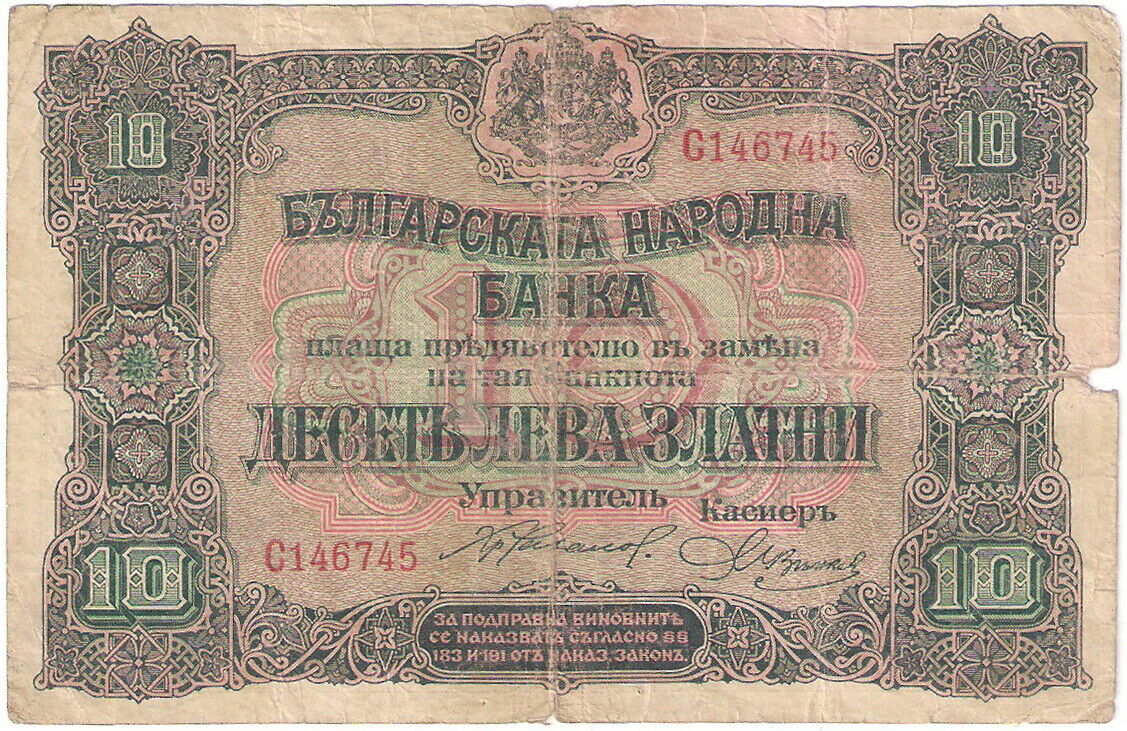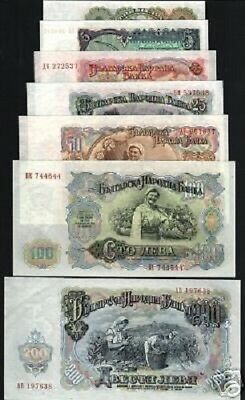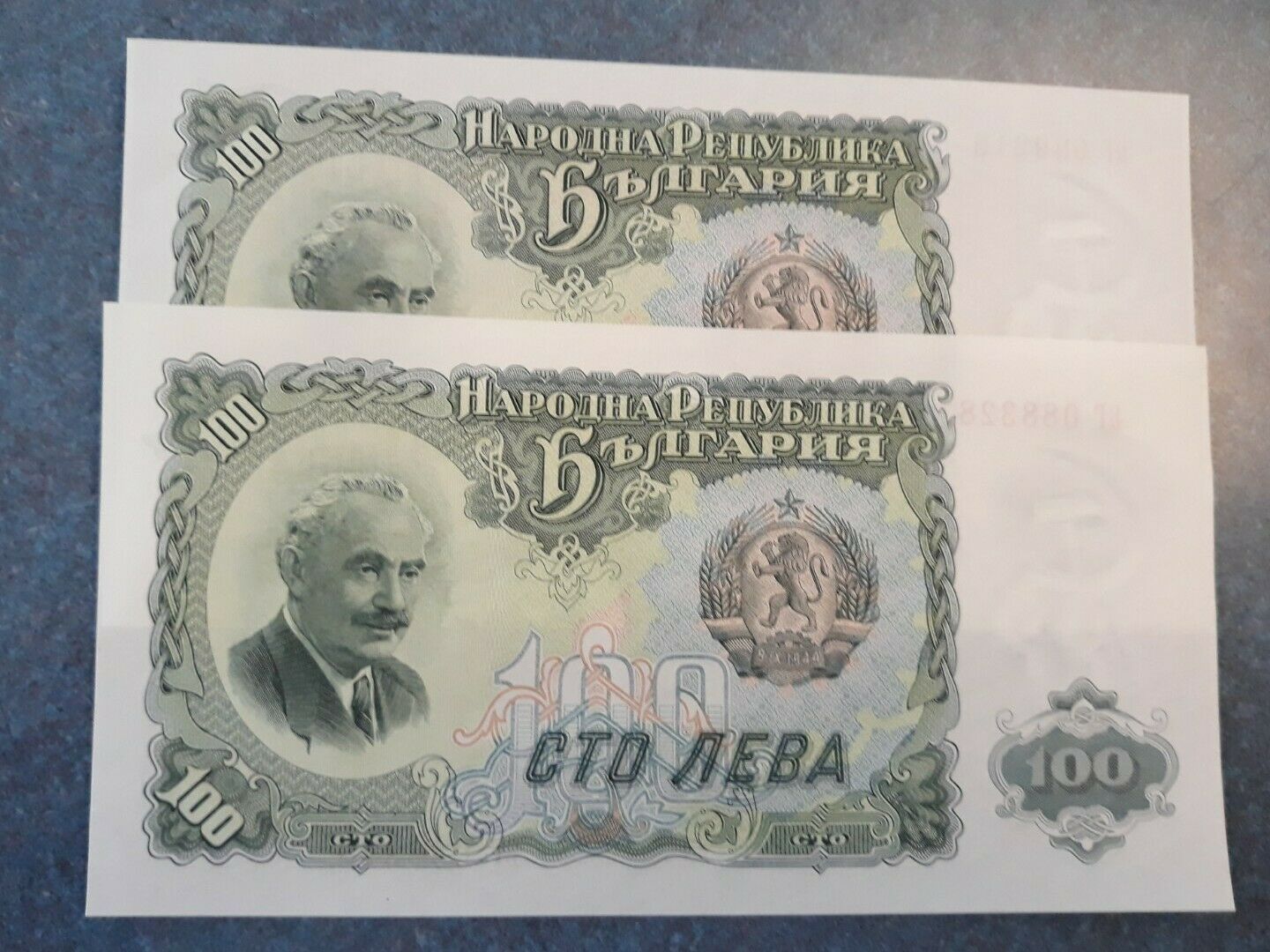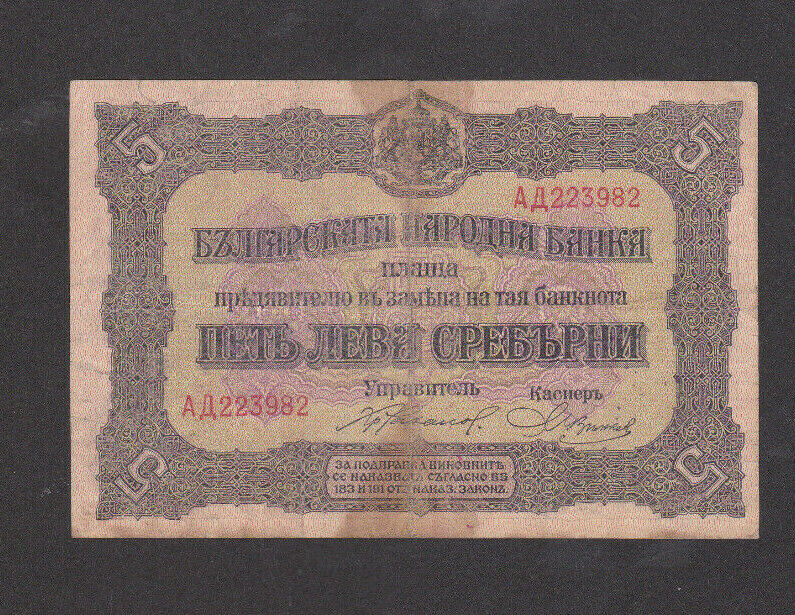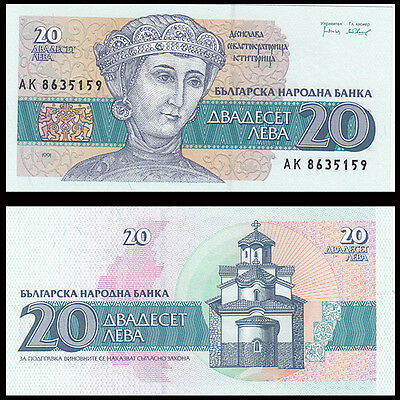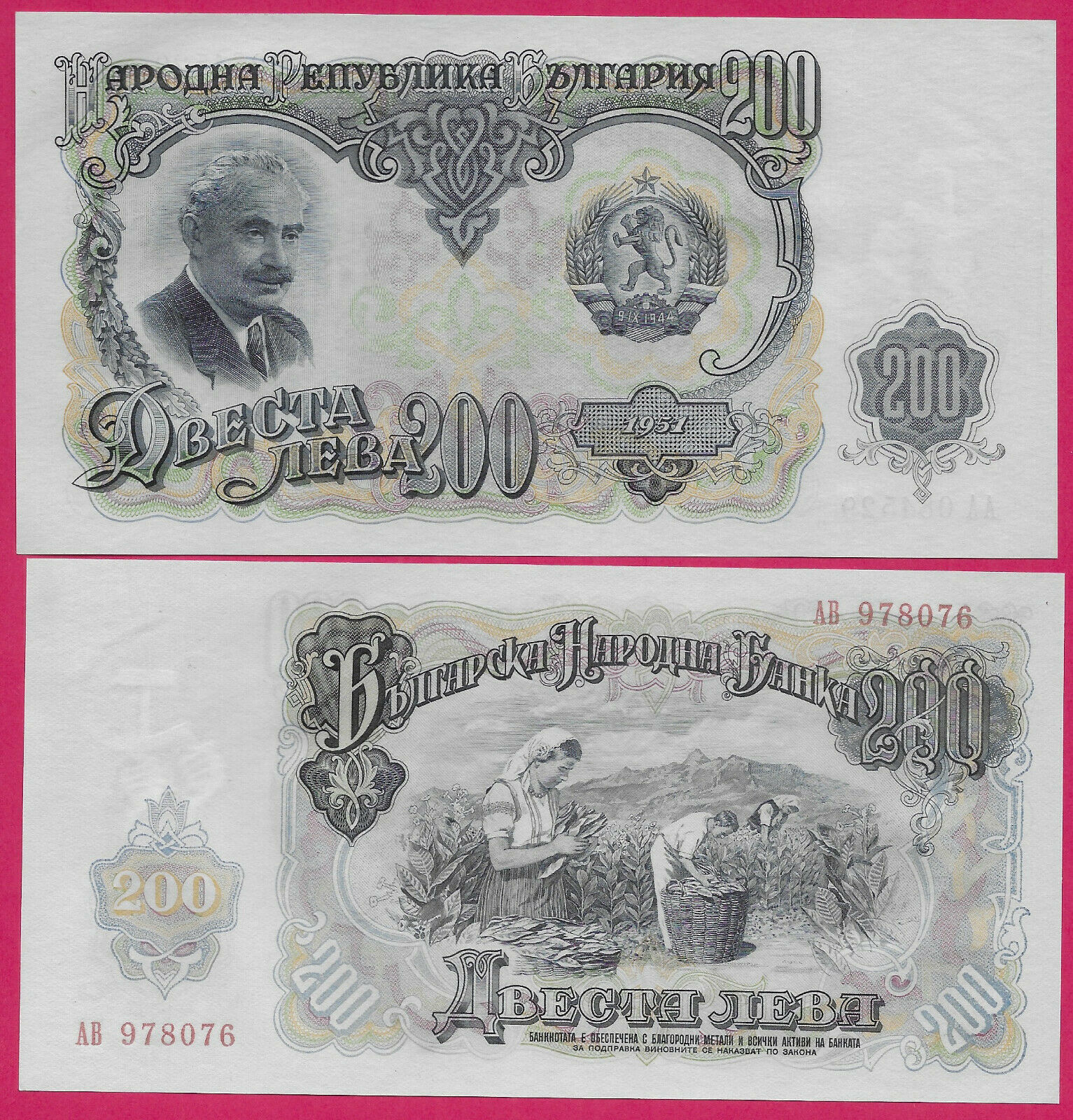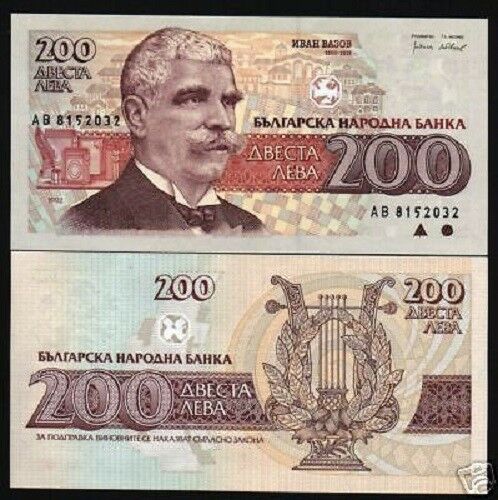-40%
Kingdom Bulgaria banknote - 10 leva - gold (zlatni) - year 1917 - WW1 - RARE
$ 11.61
- Description
- Size Guide
Description
The lev (Bulgarian: лев, plural: лева, левове / leva, levove) is the currency of Bulgaria. It is divided in 100 stotinki (стотинки, singular: stotinka, стотинка). In archaic Bulgarian the word "lev" meant "lion", a word which in the modern language became lăvFirst lev (1881–1952)
The lev was introduced as Bulgaria's currency in 1881 with a value equal to the French franc. The gold standard was suspended between 1899 and 1906 and suspended again in 1912. Until 1916, Bulgaria's silver and gold coins were issued to the same specifications as those of the Latin Monetary Union. Banknotes issued until 1928 were backed by gold ("leva zlato" or "zlatni", "лева злато" or "златни") or silver ("leva srebro" or "srebarni", "лева сребро" or "сребърни").
In 1928, a new gold standard of 1 lev = 10.86956 mg gold was established.
During World War II, in 1940, the lev was pegged to the German Reichsmark at a rate of 32.75 leva = 1 Reichsmark. With the Soviet occupation in September 1944, the lev was pegged to the Soviet ruble at 15 leva = 1 ruble. A series of pegs to the U.S. dollar followed: 120 leva = 1 dollar in October 1945, 286.50 leva in December 1945 and 143.25 leva in March 1947. No coins were issued after 1943; only banknotes were issued until the currency reform of 1952.
In 1885, the Bulgarian National Bank introduced notes for 20 and 50 gold leva, followed in 1887 by 100 gold leva and, in 1890, by 5 and 10 gold leva notes. In 1899, 5, 10 and 50 silver leva notes were issued, followed by 100 and 500 silver leva in 1906 and 1907, respectively. 500 gold leva notes were also introduced in 1907.
In 1916, 1 and 2 silver leva and 1000 gold leva notes were introduced, followed by 2500 and 10,000 gold leva notes in 1919. In 1924, 5000 leva notes were issued, the first to lack a metal designation. In 1928, a new series of notes (dated 1922 and 1925) was introduced which gave the denominations solely in leva. Denominations introduced were 5, 10, 20, 50, 100, 500, 1000 and 5000 leva. These were followed in 1929 by 200 and 250 leva.
In 1930, coins up to 100 leva replaced notes, although 20-lev notes were issued between 1943 and 1950. Between 1943 and 1945, State Treasury Bills for 1000 and 5000 leva were issued.
Horizontal Watermark – rhombs Obverse – a vignette, the text "one lev" in the middle; background colors – black, blue, beige Reverse – a vignette with the figure “1” in the middle; background colors – blue, pink Printed in Reichsdruckerei, Berlin, Germany In circulation from 27 July 1916 to 5 May 1924.
